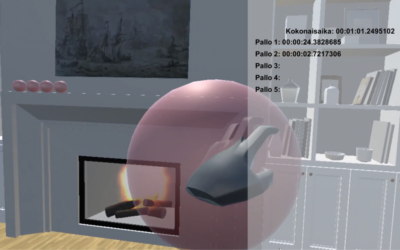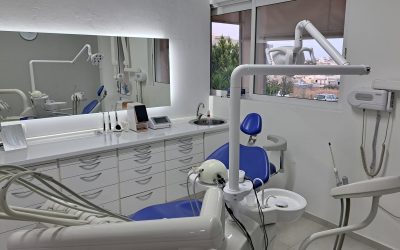A quick intro:

Theodora Seliniotaki, Health Psychologist
Theodora Seliniotaki is a Health Psychologist with a passion to assist people with stress management and well-being. Theodora’s experience in mental healthcare, welfare and academic settings includes working with children, adolescents, young adults with a history of abuse, with female patients with breast cancer, psychiatric patients, and university students. One field that interests her is how trauma in childhood can affect mental and physical health in adulthood. Through her private practice, Stress Talk, Theodora has the chance to help people with stress management, anxiety, burnout, and trauma and to collaborate with online platforms aiming to healthier employees. Her interests also expand in the academic world as she is working at a Dutch university for the last 3 years, teaching psychology to international students from all over the world.
Contact details:
- Website: www.stresstalk.eu
- Instagram account: @thestresspsychologist
- LinkedIn account: Theodora Seliniotaki

VR has been used in various, therapeutic schemes (psychological or physical) as a mindfulness technique to further support treatment and reduce patients’ stress. The multi-sensory feedback that VR offers has been shown to increase mindfulness more, compared to standard mindfulness techniques, such as guided imagery. The potential of VR to facilitate mindfulness has led to various forms of such VR applications, intended for use not only in a clinical setting but also in private, home contexts by individuals. This, in combination with the commercialisation of VR headsets (reducing purchase costs to a great degree), could also shape the future of teletherapy, with patients gaining access to a VR-enriched session if they already own or are willing to buy their own VR headset. Furthermore, in situations where the VR headset could be provided by the healthcare system (or other funding schemes that aim to better treatment access and delivery), individuals who cannot access treatment directly (due to inconvenience, living in rural areas or coming from low socio-economic backgrounds) could benefit by the use of new, efficient treatment tools like VR.
So, we asked Theodora about her views on the use of VR in mindfulness and the potential of it to aid teletherapy.
- In your view, would VR help to facilitate mindfulness in a teletherapy session?
Mindfulness has many different techniques and ways to help an individual, and in most of them there is space for VR applications. For example, in guided meditation VR programs can create an appropriate environment to ensure concentration and relaxation. An important aspect of mindfulness is learning to regulate physiological responses like high heart rate during stressful times. VR could offer the tools for real time measurement and regulation of heart rate variability as well as showing to the patient how their body reacts to mindfulness techniques. Apart from learning value as the patient is trained to take control of these physiological reactions, VR applications could also offer proof to patients that mind and body are connected, and that this connection plays a pivotal role in mental health. A last example I can think of, is the applications of mindfulness in trauma healing. Some approaches focusing on PTSD use exposure therapy to gradually expose the patient –when the time is right- to stimuli and environments that played a role in the development of their trauma. However, with the means that we currently have, exposure therapy faces a lot of limitations. Imagine a patient whose trauma took place on a flying plane. How could we replicate that in therapy? Realistically, only with visualisation techniques. This is a part where VR could help by replicating the appropriate environment for the gradual exposure of the patient.
- In cases you deliver teletherapy sessions, would you be willing to include VR in your treatment protocol for the patient to achieve mindfulness? Why/why not?
The biggest percentage of my sessions now are delivered online. Mindfulness can be applied in a convenient way via distance. However, I cannot help but imagine how many more possibilities VR tools could offer in these practices. So, my answer is yes, I would use it. However, I would not ignore the patient’s needs and wishes as it is possible that people could be reluctant to use such means or could be hesitant due to potential extra costs. In any case, where and for whom is possible, I believe that VR could help the patients achieve their mindfulness practices more efficiently.
- Does the working setting play a role in this decision? For example, if a clinician is employed by a company, whether VR could be used would be dependent on the culture of the company itself?
This is a possibility as well. I am currently working with a many different companies that offer Employee Assistance Programs (EAPs) which include therapy sessions to employees paid by the employer. In some of these EAPs, there are limitations and guidelines as to what the psychologist/therapist/counsellor is allowed to use during each session. For instance, some companies offer only counselling sessions and not therapy sessions for trauma as the latter can be long term whereas the number of sessions offered is limited and sometimes strict.
- Do you identify any other challenges in employing VR in a teletherapy session regarding practicality issues (e.g. duration session, technical concerns, patient’s setting…)?
Every therapeutic intervention has its limitations so I see probable that VR will be no different. Issues like a longer session duration can be tackled with setting expectations with the patient beforehand, leading to a mutual agreement about time and extra costs that might be included. When it comes to technical concerns, this is a concern that exists in any type of technology we use now in therapy. For instance, working online has limitations of that sort because of potential network failure which is of limited possibility but still real. When it comes to the patient’s setting, this could be a challenge in VR applications. However, I trust that the VR scientific community will produce appropriate solutions and guidelines of usage of each means.
- Would you say any patient could be delivered a teletherapy session that involves VR?
In therapy, we accept that not everything works for everyone. And this is for any kind of therapy, in person and teletherapy. For example, I have clients who do not like meditation. They have tried it before, and they felt that this is not for them. On the other hand, there are clients who are very much focused on meditation and meditation-like techniques, and they prefer them for their own needs. Additionally, when it comes to technology specifically, we need as therapists to allow the patients the space to choose if they would like to use VR or other means for their therapy, but also as mental health professionals we also have the responsibility and the knowledge to understand when a patient could be benefited from different means due to the nature of their situation/diagnosis e.g. a patient with extreme techno stress, or a patient with physical limitations that could be triggered by a VR environment due to its realistic nature.
- Would you say that any type of treatment would fit nicely with a mindfulness VR approach or is it treatment-dependent?
Continuing my previous answer, there are a lot of factors to consider when making the treatment plan of a patient: the nature of the diagnosis – if a diagnosis is appropriate, the wishes of the patients, the assessment of the source of stress and/or trauma, physical and mental limitations etc. These factors help us understand which treatment or therapeutic approach could be the best fit for the patient as each approach can have many ways of assisting the patient. In this variety of techniques, we could say that VR will find some space to compliment the possibilities of each approach.
- Do you see this shaping the future of teletherapy, considering mindfulness VR applications and VR applications for other treatment purposes as well (such as alcohol relapse prevention or smoking cessation)?
I believe that we are going to witness great leaps of development in the field of teletherapy. After the covid pandemic, it became obvious that we need to be flexible to accommodate many diverse needs and to remain accessible. And technology is a wonderful way to achieve this availability. This being said, I do think that VR will find its way into many distinct aspects of mental health, addiction and rehabilitation being very good candidates for it.
After this “A quick look on…” the use of VR in mindfulness, we thank Theodora for her time and expertise and we hope to see more clinical studies on how VR could be employed as a mindfulness tool in teletherapy and daily, clinical practice.





